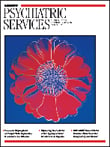Clinical Manual of Psychosomatic Medicine: A Guide to Consultation-Liaison Psychiatry
Psychosomatic medicine is the subspecialty field of psychiatry that concerns itself with the psychiatric care of patients with complex medical, surgical, obstetrical, and neurological conditions. Given the vast array of issues facing the clinician engaged in consultation-liaison work, a concise, portable reference text would be quite useful. The Clinical Manual of Psychosomatic Medicine aims to be such a resource.
Authored by two experienced, academic consultation-liaison psychiatrists, Michael Wise and James Rundell, the book is essentially the fourth edition of their text, the Concise Guide to Consultation-Liaison Psychiatry . This new edition is organized in a clear and straightforward manner covering in brief detail the most important areas of psychosomatic medicine.
After an initial chapter discusses psychiatric consultation in today's health care environment, the authors go on to give a very practical overview of the mental status exam. The eight subsequent chapters describe the epidemiology, risk factors, clinical characteristics, differential diagnosis, treatment, and management of a variety of major disorders. Delirium, dementia, depression, mania, anxiety, somatoform and related disorders, and substance-related disorders are covered concisely. The remaining chapters cover important topics such as pharmacological issues, violence and aggression, pain and analgesics, personality, response to illness and medical psychotherapy, medicolegal issues, suicidality, and geriatric psychiatry. The book concludes by briefly describing special psychosomatic medicine settings and situations such as pregnancy, burns, cancer, neurology, and organ transplantation. Every chapter includes references and suggested additional reading.
This book certainly has considerable strengths. Its scope covers virtually all issues encountered on a regular basis by the consultation-liaison psychiatrist—all in a volume small enough to slip into a lab coat pocket. It presents a very practical approach to the assessment of patients with psychiatric symptoms in the general medical setting. Several chapters should be required reading for medical students and residents rotating on a consultation-liaison service. For example, the chapter "Medicolegal Issues in Consultation" is particularly thoughtful and well written.
However, I have concerns about the overall adequacy of this concise guide as a primary resource. The book is somewhat inconsistent in quality when it comes to issues surrounding treatment. A well-organized table outlining evidence-based guidelines for the treatment of delirium with haloperidol is a good and succinct resource when the busy clinician needs to quickly grasp information. However, one of the problems was the unreferenced statement "catatonia is treated by increasing neuroleptic medication" and electroconvulsive therapy. In fact, the treatment of catatonia requires avoidance of neuroleptics and the use of benzodiazepines or electroconvulsive therapy ( 1 ).
This text will certainly help medical students and residents understand the basics of psychosomatic medicine; I am not sure it is comprehensive enough to be useful on rounds, a problem that is common to handbooks. For this reason, it is rapidly becoming common practice to have ready online, wireless access to large bodies of quickly searchable books and reference materials that are constantly being updated. When electronic resources are unavailable I recommend the Clinical Manual of Psychosomatic Medicine as a succinct, portable reference for trainees with an interest in the field.
1. Fink M, Taylor MA: Catatonia: A Clinician's Guide to Diagnosis and Treatment. Cambridge, United Kingdom, Cambridge University Press, 2003Google Scholar



